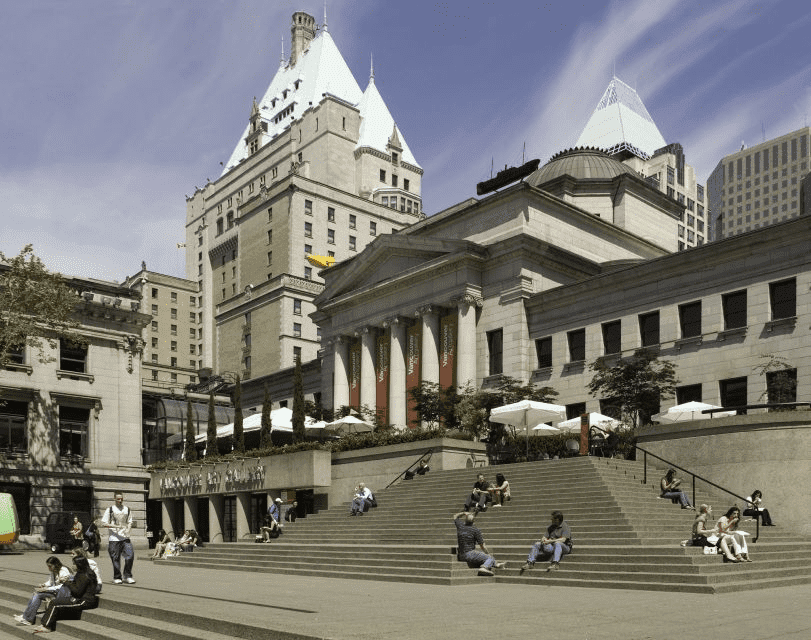The ancient building designed by architect Francis Rattenbury is an example of neoclassical style in the tradition of fine arts. That’ the description given by connoisseurs of Vancouver’s Palace of Justice, which was built on 165,000 square feet (15,300 square metres). Read more at vancouver-future.
The building, which was created to a design that won a competition, was opened to the public in 1911. It consisted of three parts incorporating two wings with Ionic columns framing a massive central pediment. The last one has a striking portico supported by four columns and surmounted by a copper-embellished dome on an elevated base.
Francis Mawson Rattenbury (1867-1935) was a famous Victorian architect who created many similar structures in British Columbia. The courthouse was opened in autumn 1911 and immediately achieved informal status as the best structure of its kind in the whole country.
The courthouse was constructed using marble imported from Alaska and other parts of the continent. The creation of the new palace of justice began in 1906. It was necessary to create a worthy replacement for the courthouse that had been located on Victory Square.
A new courthouse for a rapidly growing city
It was the example of a building erected for law enforcement agencies in British Columbia. It illustrated the importance of a strong justice system for Canadians. On the other hand, it reflected the rapid growth of Vancouver as an important administrative center of the country. In order to prove this point, we can pay attention to the following facts: the Vancouver Judicial District was established in 1892, and already in 1906 the court buildings quickly became outdated due to excessively rapid population growth.
In 1914, when the building became too small for the city’s population, a new large wing was added to its western side, according to Thomas’s plans, connected to the main building by a two-storey closed corridor. It was the only fragment of the building that was not reconstructed.
In order to brighten up the deliberately harsh and sometimes sad atmosphere of what was happening outside the walls of the building, in 1966 the Century Fountain was installed near the palace. The main reason for the construction of the water artifact was the desire to celebrate the centenary of the union of the colonies of Vancouver Island and British Columbia. Having existed for a little over fifty years, the fountain was dismantled as part of the reconstruction of the square on Georgia Street.
Instead of court – Art gallery

In 1980, the Vancouver Courthouse was designated a National Historic Landmark of Canada. Both the main building and the annex to the building were designated by the government as Category A heritage sites. This decision was influenced by the fact that the building is a prime example of this type of institution of power.
In 1983 it was decided to transfer the complex of the Palace of Justice to the Vancouver Art Gallery. The cultural institution, whose owner remained, as before, the Government of British Columbia, received the former courthouse on lease.
Before the museum opened its exhibitions in the new location, the Palace was renovated under the direction of architect Arthur Erickson. It cost 20 million Canadian dollars. The renovation itself was part of a larger project that also included the reconstruction of Robson Square – three city blocks. The gallery itself is connected to the rest of Robson Square by an underground passage under Robson Street.